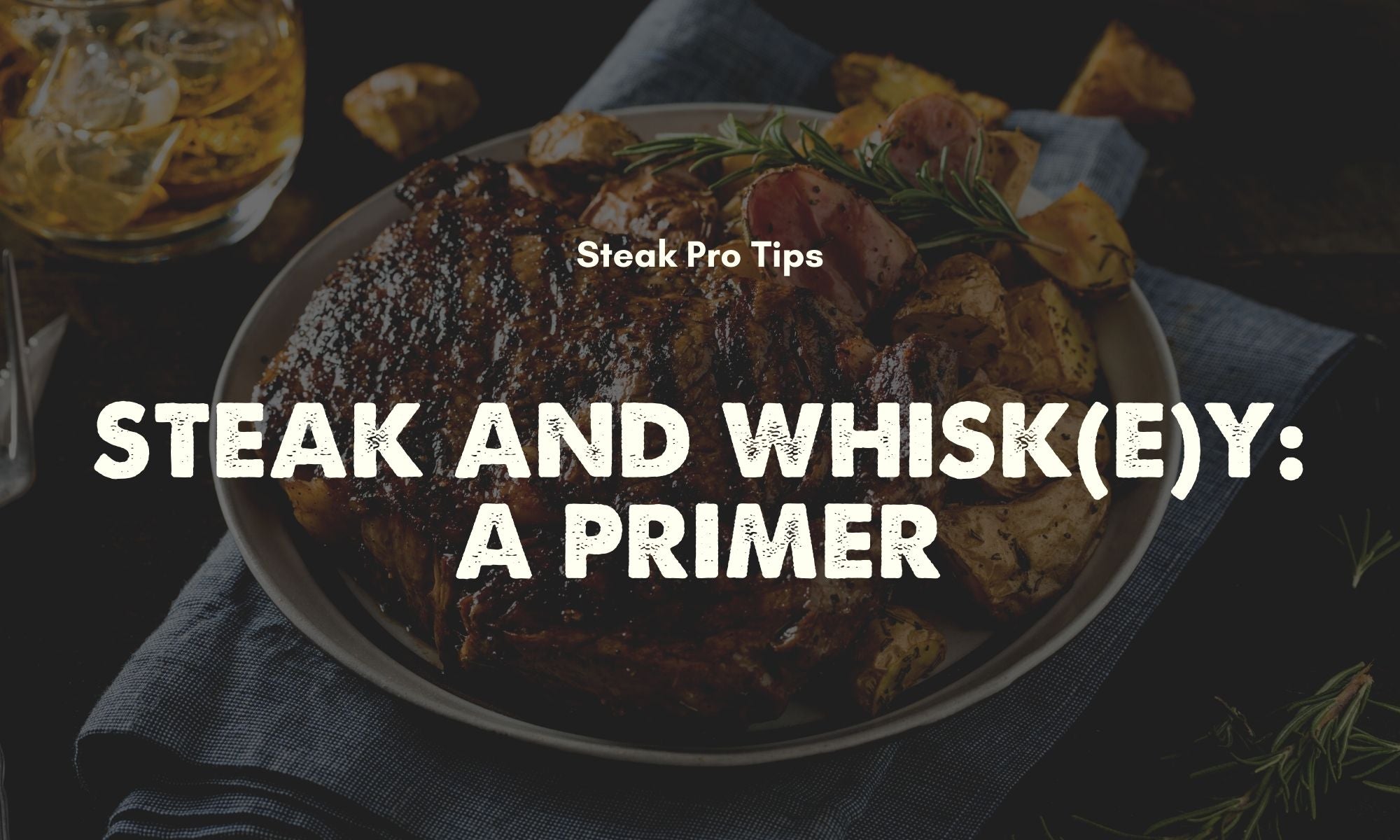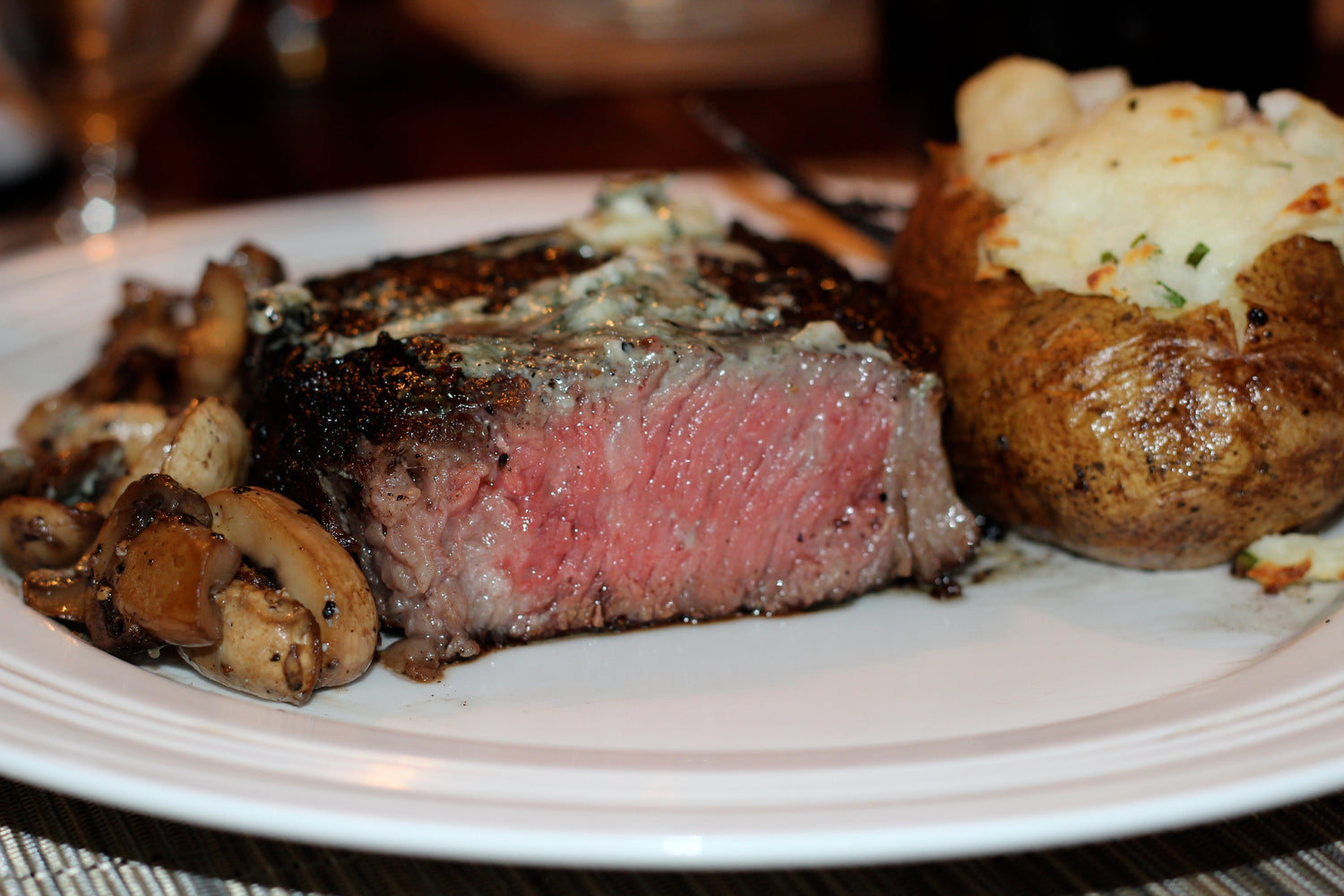Pairing: steak & whiskey
You probably already know that wine and steak pair well together (we love a great Syrah or Cab or Zin or Pinot or…okay, steak and wine pair pretty well together), but perhaps you are not a wine lover or are seeking an additional taste challenge. If you're feeling bold, whiskey in its many forms can be a good pairing for a robust steak dish.
What style goes with steak? It depends! Just like searching for the perfect wine to pair with a steak, personal preference plays a large role in pairing steak with whiskey. That said, a few common characteristics may help:
- Leaner cuts may match well with spicier offerings like bourbon, rye, or Canadian whiskey
- Lean cuts also pair well with some of the sweeter varieties - like Pendleton (Canadian) or Woodford Reserve
- Grilled meats may pair well with something with some “sweetness” to go with the smokiness of the whiskey – Angels Envy or even some of the Port Wine aged Scotch offerings (like Dalmore)
- One of the most enjoyable things to do is to set up a sipping flight and try a variety of profiles until you find one you like
Whiskey varieties
Since every pallet is unique, and each whiskey-making method reflects the local culture and geography, there are different flavor profiles that tend to emerge between locations (and even within each framework – see below for some of those).
Scotch Whisky
The Scots leave out the “e" when spelling whisky. Scotch comes in both blended and “single malt” (only one type of malt is used in the distilling process) varieties. Scotch varies from light and fruity (Scapa, The Glenlivet), to rich and smoky (Talisker, Laphroaig), to rich and complex – but without the peat smoke/iodine flavor (Balvenie, Macallan).
Purists typically stick with the single malts from their preferred location:
- Islay – home of the peat monsters and the briny, smoky, peaty flavors
- Speyside – 50+% of all single malts come from this small area, and flavors tend to be more subtle and sweet (fruit, vanilla, caramel) without much peat
- Highlands – pretty varied, as this area incorporates some island distilleries as well as some of the Speyside characteristics; you can find a flavor for almost every palate here
- Lowlands – lighter and more subtle flavors abound here – these Scotches are often preferred as a pre-dinner palate cleanser
- Campbletown – the smallest area, with only three distillers that still produce some superior whisky

For steak pairings, this, again is a personal preference. Many people will select the “smoky, peaty” style to help counter-balance the richness or the steak. What is your favorite?
Irish Whiskey
If you talk to the Irish, they will tell you they invented whiskey first – and it then made its way to Scotland, where the soil and peat created a new flavor and distilleries began roasting the malt. Some will say that the Irish added the “e” to their product name to differentiate from what they felt was a sub-standard Scotch product.
With unroasted malt, different flavors emerge, including apple, straw, vanilla, and nutmeg. The Irish also introduced the “pot still” – a method of distillation pioneered by John Jameson that gave Irish whiskeys their consistent quality and flavor.

Historically considered a bit too sweet or light for steaks, better techniques and changing palettes make these a strong consideration to sip while enjoying that spectacular cut of Dry Aged Steak.
Canadian Whisky
Canada, due to a large Scottish influence, uses the spelling preferred in Scotland and leaves out the “e." With the heavy French influence in Canada, this seems a contradiction – as does the entire Canadian Whisky industry. Like an iceberg, you see only the very top portion, but there is a robust industry that works furiously below the surface.
Perhaps the most interesting thing about Canadian Whisky makers is that they focus almost exclusively on blended whisky. This works against the industry at times, as “blended” is often interpreted as “inferior” – but that is not necessarily the case. We actually see the blending aspect more akin to wine-making – blending flavors of different varietals (in this case, base grains) to achieve a distinctive flavor profile. Since wine is a great accompaniment to steak, we see Canadian Whisky as having the potential to create a truly unique experience for eating and drinking. Get your flights ready!

American Whiskey (and Bourbon)
Did you know that there are six types of American Whiskey? Here they are – and they all must conform to the “51 Percent Rule”:
- Rye Whiskey (mash must contain at least 51% rye)
- Malted Rye Whiskey (mash must contain at least 51% malted rye)
- Wheat Whiskey (mash must contain at least 52% wheat)
- Malt Whiskey (mash must contain at least 51% malted barley – this is the closest version to Scotch)
- Bourbon (mash must contain at least 51% corn)
- Corn Whiskey (mash must contain at least 80% corn) – also, Corn Whiskey is not required to be aged in a charred new oak container and is rarely aged at all
Some other interesting facts about American Whiskey…
- Straight Whiskey is at least two years old, not blended with other spirits, colorings or additives, and no more than 160 proof
- Blended Whiskey violates one or the rules above
- Blended Straight Whiskey blends one or more varieties of “Straight Whiskey”
- Light Whiskey contains more than the 80% alcohol requirement and is getting closer to a neutral spirit
- Spirit Whiskey is a blend of whiskey (at least 5%) with neutral spirits
There are still other modifiers. As an example, Tennessee Whiskey must be straight bourbon whiskey distilled within the state of Tennessee, while exports of either Kentucky Bourbon or Tennessee Straight Whiskey must be distilled – but not necessarily bottled – within the geographic borders of those states to carry that name.

Whew – that is a lot of whisk(e)y, and a lot of options to pair with your steak. The possibilities are endless, increasing the chances you can find something that works with your palette.




